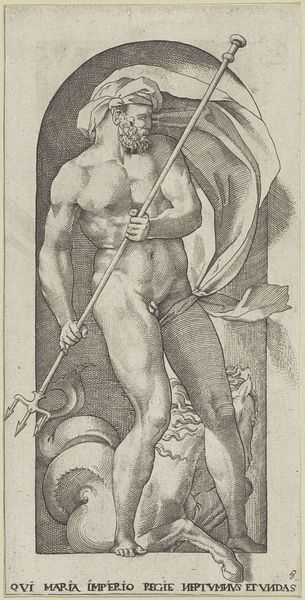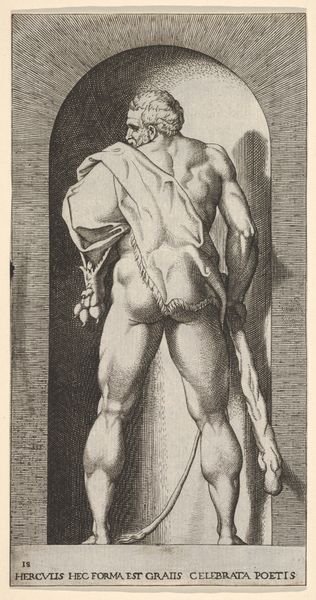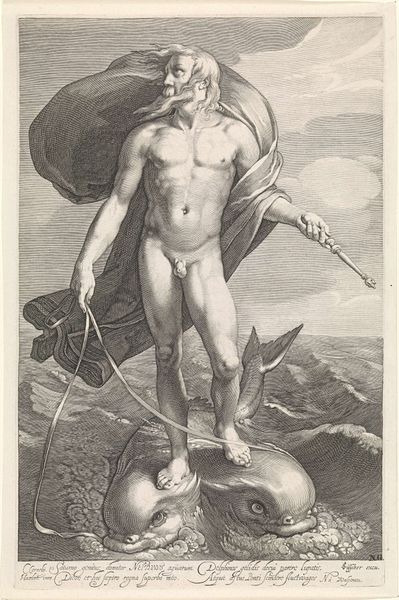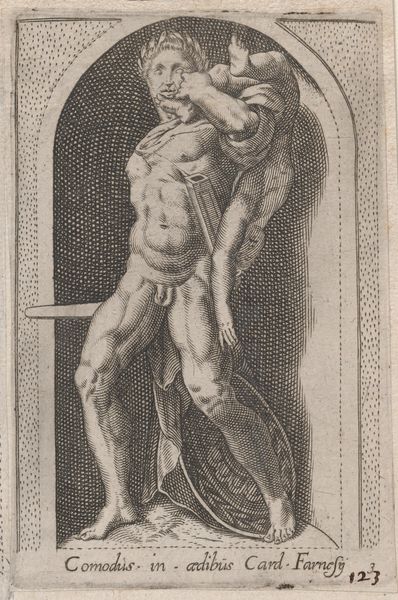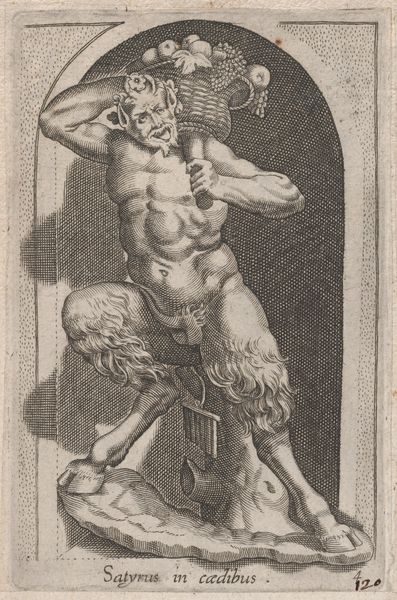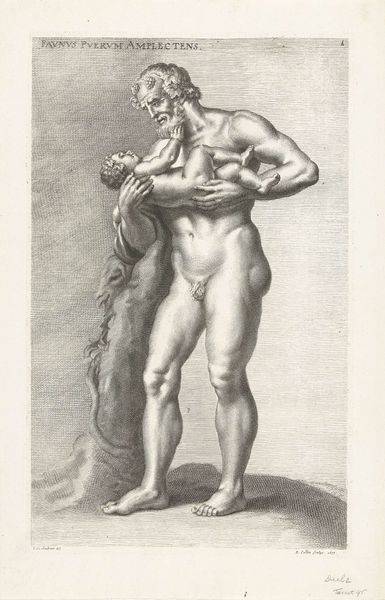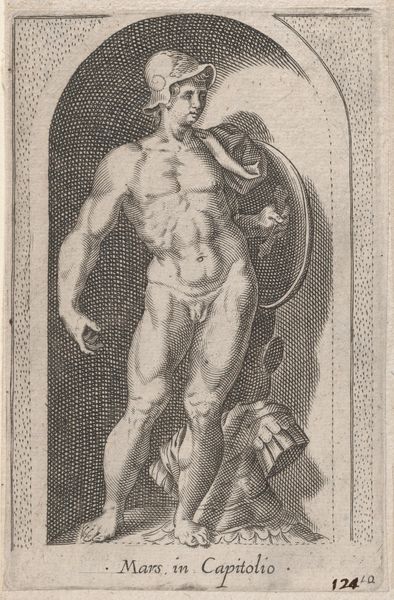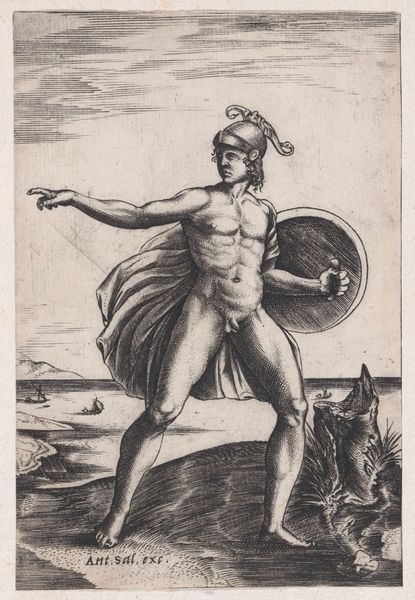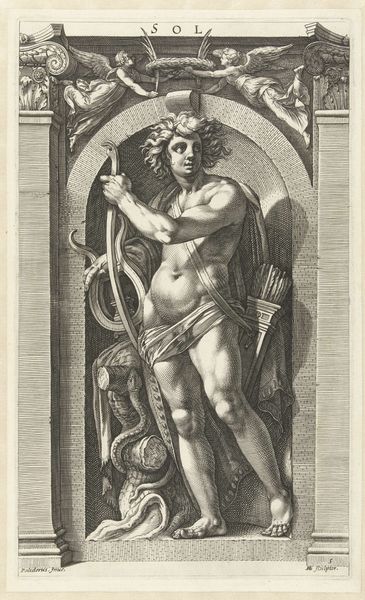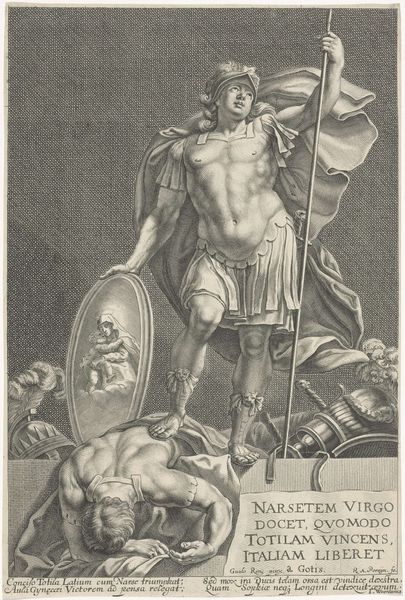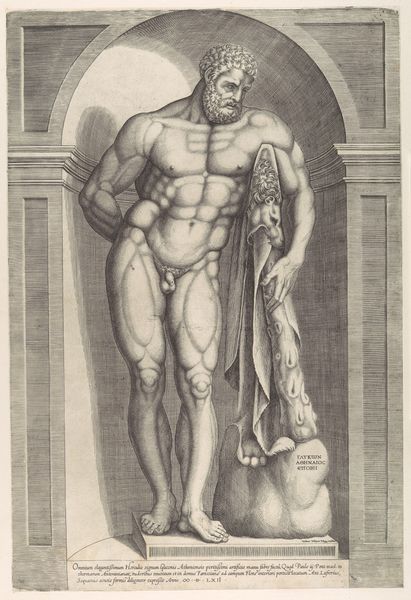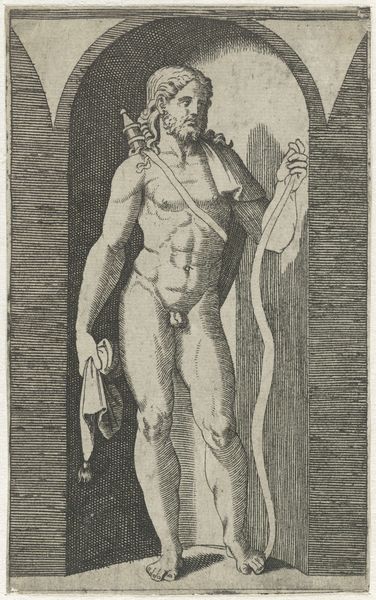
Plate 5: Neptune standing in a niche holding a trident, with a hippocampus (sea-horse) behind him, from a series of gods and goddesses 1526
0:00
0:00
drawing, print, engraving
#
drawing
#
allegory
# print
#
greek-and-roman-art
#
old engraving style
#
mannerism
#
figuration
#
portrait reference
#
nude
#
engraving
#
sea
Dimensions: sheet: 8 3/16 x 4 3/16 in. (20.8 x 10.7 cm)
Copyright: Public Domain
Curator: It strikes me as intensely… reserved, despite Neptune's lack of attire. It's like the ocean's depths hold more secrets than wild abandon. Editor: We're looking at "Plate 5: Neptune standing in a niche holding a trident, with a hippocampus (sea-horse) behind him," an engraving by Giovanni Jacopo Caraglio from 1526. The medium is fascinating—an engraving, allowing for a precise and reproducible image, indicative of print culture emerging during that era. Curator: It feels like the kind of image someone would keep tucked away, like a forbidden peek into mythology. Look at how crisply he’s rendered. The crispest Neptune I ever did see. Does that make sense? Editor: Absolutely. The engraving allows for this level of detail. I think this kind of production served specific societal functions at the time. Engravings, circulating through print shops, brought these classical images to a wider, more diverse audience than exclusive paintings might have. This one is at the Met right now. Curator: Making the god… slightly less godly, and a tad more democratic. Almost relatable. See how his eyes avert the viewer's gaze? A subtle acknowledgement of the very real people who are purchasing the engravings! And is that seahorse supposed to look slightly silly? Editor: Perhaps Caraglio aimed for approachability. You have to think about labor here, too—the hours, the meticulous work on the copperplate. The finished product becomes a commodity, a representation of mythological power transformed into a tangible object, purchased and displayed, or even traded. What becomes of Neptune's power, exactly? Is he truly democratized? Curator: Oh, I love that you’re thinking about value that way. Well, it depends on who you ask, I imagine. I can feel that tension radiating from him. Thank you so much. Editor: Thank you. That was a fascinating glimpse into Caraglio's creation. The confluence of technique, social function, and mythology—quite something.
Comments
No comments
Be the first to comment and join the conversation on the ultimate creative platform.
